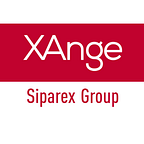Last summer, XAnge made three significant exits: Conexance acquired by WPP, Fidor acquired by BPCE and News Republic acquired by Cheetah Mobile.
For a VC, an exit is always great news. Even more so if we can look back and learn how to do a better job. We thought it would be useful to share these exit lessons with you.
The take-off: prefer quality project and team than friendship with VCs
Let’s get into it here. Should there be a specific relationship between founders and VCs, even before the start of a partnership? No. VCs avoid cronyism. What they look at is top- notch teams with cutting-edge projects.
The News Republic case shows an example of a trusting relationship built over time — with an entrepreneur who had pitched us a couple of times before we took the investment decision — but things are definitely not always as straightforward. If it is necessary for VCs and entrepreneurs to bond and share views over the course of the partnership to ensure its efficiency in serving the company’s growth, there is of course no rule as to whether they should have known each other before.
Another example. Even if Fidor’s CEO Mattias Kroener was already known as a successful entrepreneur, having founded the first direct broker in Germany, we had never worked with him when entering early in the deal — pre-banking licence -, as the first investment institution. The same is true for Conexance: we were there at the very beginning of the adventure, without having previous knowledge of them.
So, one might wonder what conditions or aspects prevail for a VC, when investing in a new company. How does the VC decide to embark on each journey?
As for Fidor, the disruptive potential of the startup was key to the investment decision. Same with Conexance, when investing in 2006, the digital switchover was the turning point. When the investment decision was taken in 2012 for the mobile app News Republic, the market had become more mature. Smartphone news had expanded, but there was still room for it. We had known the team since 2009 and had had time to build confidence.
The cruising speed: have a solid VC on board
If the VCs are here for the good times, entrepreneurs can also rely on them in more difficult times. Taking this unpredictability into account, the VC is most helpful when adopting a pragmatic attitude towards adversity, in order to deal with it in the best possible way.
As for Fidor, imagine a fintech player back in 2008. Building a tech-based company in such a regulated environment as banking, was not an easy task. We were taken for madmen!! There was a real effort at communication made on both sides, in software and banking. And finding the right partners required some effort too.
In the case of NewsRepublic, the missed new fundraising target in 2015, which was crucial step for the company’s development, was a tough phase. It resulted in an emergency situation for the board. At one point there was only a week’s worth of operating capital left in the firm. As a result we, and the two other investors, had to complement the investment. It was a great example of team work.
The case of Conexance was more of an exception in our portfolio. Substantial profitability while growing 20% year over year was making it an outlier.
The landing phase: everybody push in the same direction
Contrary to what some may say, in the vast majority of cases, the entrepreneurs have the most influence on the decision to exit and its optimal timing. If sometimes the fund structure and characteristics make it mandatory for the VC to leave the stage, as in the Conexance example, the fund may happen to be less suited to take the company to its next level. For the Fidor exit, when it was decided to go on to the international markets, the move would have required a lot of financing. When wondering whether to go, it appeared to us the company needed much bigger investors. The role of the VC should also be to know when to back up a firm — or to exit and be replaced by a better shareholder for the company at any given stage.
Ready for take-off again?
Exiting a company does not equal cutting all ties with the entrepreneurs. It is not unusual to think that whatever the long term plans of entrepreneurs, we might get the chance to accompany them again somewhere along the way. Because VCs usually choose to bet on people rather than on firms.
